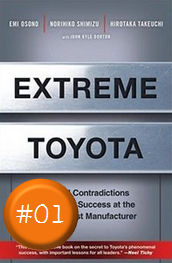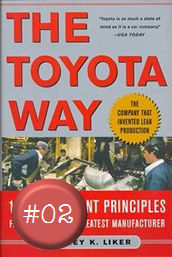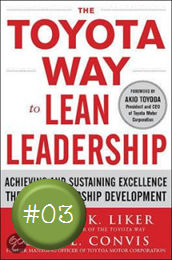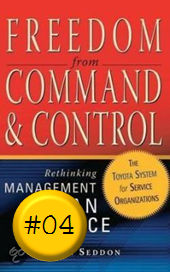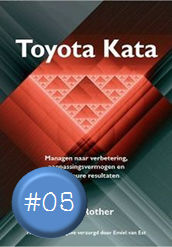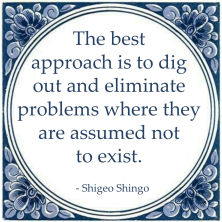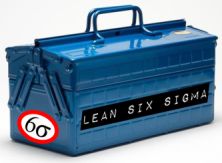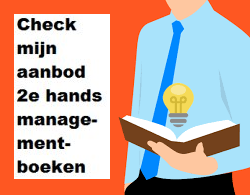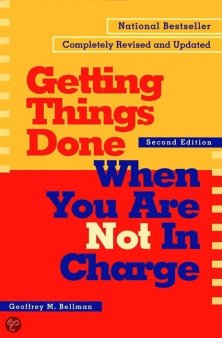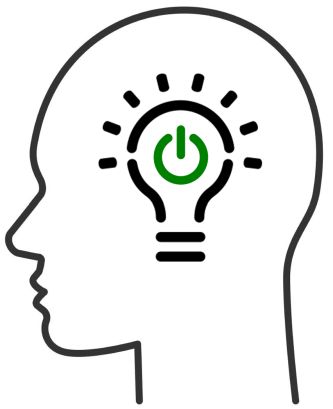
Vierfasenleermodel ('bewust bekwaamwordingsproces')
Definitie
Model dat beschrijft via welke vier fasen iemand leert.
Vierfasenleermodel
Ontwikkeld door Noel Burch van US Gordon Training International Organisation (en wordt vaak ten onrechte toegeschreven aan Maslow)
Zie ook:
- Leren volgens het bewust/bekwaam-model van Abraham Maslow
- Leren volgens Jaan van 't Hek en Leike Oss
Alias: hiërarchie van competentie, competentieladder, vierfasenmodel van competentie, bewust bekwaamwordingsproces
![]()
Four stages of competence
In psychology, the four stages of competence, or the "conscious competence" learning model, relates to the psychological states involved in the process of progressing from incompetence to competence in a skill.
Management trainer Martin M. Broadwell described the model as "the four levels of teaching" in February 1969.[1] Paul R. Curtiss and Phillip W. Warren mentioned the model in their 1973 book The Dynamics of Life Skills Coaching. The model was used at Gordon Training International by its employee Noel Burch in the 1970s; there it was called the "four stages for learning any new skill". Later the model was frequently attributed to Abraham Maslow, incorrectly since the model does not appear in his major works.
The four stages are:
(1) Unconscious incompetence
The individual does not understand or know how to do something and does not necessarily recognize the deficit. They may deny the usefulness of the skill. The individual must recognize their own incompetence, and the value of the new skill, before moving on to the next stage. The length of time an individual spends in this stage depends on the strength of the stimulus to learn.
(2) Conscious incompetence
Though the individual does not understand or know how to do something, they recognize the deficit, as well as the value of a new skill in addressing the deficit. The making of mistakes can be integral to the learning process at this stage.
(3) Conscious competence
The individual understands or knows how to do something. However, demonstrating the skill or knowledge requires concentration. It may be broken down into steps, and there is heavy conscious involvement in executing the new skill.
(4) Unconscious competence
The individual has had so much practice with a skill that it has become "second nature" and can be performed easily. As a result, the skill can be performed while executing another task. The individual may be able to teach it to others, depending upon how and when it was learned.
Bron: https://en.wikipedia.org/wiki/Four_stages_of_competence
![]()
Understanding the Conscious Competence Ladder
Noel Burch, an employee with Gordon Training International, developed the Conscious Competence Ladder in the 1970s.
The model highlights two factors that affect our thinking as we learn a new skill: consciousness (awareness) and skill level (competence).
According to the model, we move through the following levels as we build competence in a new skill:
- Unconsciously unskilled – we don't know that we don't have this skill, or that we need to learn it.
- Consciously unskilled – we know that we don't have this skill.
- Consciously skilled– we know that we have this skill.
- Unconsciously skilled – we don't know that we have this skill, but we don't focus on it because it's so easy.
Bron: https://www.mindtools.com/pages/article/newISS_96.htm
![]()
The Four Stages for Learning Any New Skill
No matter what new skill we decide to learn, there are four learning stages* each of us goes through. Being aware of these stages helps us better accept that learning can be a slow and frequently uncomfortable process.
Stage 1 – Unconsciously unskilled. We don’t know what we don’t know. We are inept and unaware of it.
Stage 2 – Consciously unskilled. We know what we don’t know. We start to learn at this level when sudden awareness of how poorly we do something shows us how much we need to learn.
Stage 3 – Consciously skilled. Trying the skill out, experimenting, practicing. We now know how to do the skill the right way, but need to think and work hard to do it.
Stage 4 – Unconsciously skilled. If we continue to practice and apply the new skills, eventually we arrive at a stage where they become easier, and given time, even natural.
*This Learning Stages model was developed by former GTI employee, Noel Burch over 30 years ago.
Bron: Learning a New Skill is Easier Said Than Done, Linda Adams![]()
Leren en transfer bewerkstelligen
Leren is komen tot effectiever gedrag. Tijdens leerprocessen doorloopt de ge-coachte de cyclus van onbewust onbekwaam (bijvoorbeeld: ik weet niet dat ik defensief reageer op feedback) tot onbewust bekwaam (Ik reageer adequaat op feedback en realiseer me niet eens dat Ik dat doe). Het gaat er dus om dat de gecoachte zo bekwaam wordt in bepaald gedrag, dat het hem soepel en natuurlijk afgaat. Die bekwaamheid Is wat ons betreft een mix van weten, kunnen, willen, durven en zijn. Afhankelijk van het leerdoel zal het accent in meer of mindere mate op bepaalde aspecten liggen.
Voor een geslaagde afloop van het coachtraject is het in praktijk brengen van het geleerde in de dagelijkse werksituatie van groot belang. Doen Is de toets van alle coaching: zo krijgt de gecoachte zicht op het resultaat, en dit resultaat beklijft beter. Dat beklijven is voor ons overigens het verschil tussen leren en transfer bewerkstelligen: Iets leren wil nog niet zeggen dat het geleerde beklijft of toepasbaar is. Dat is wel het geval bij transfer.
Bron: Hoe-boek voor de coach, Joost Crasborn
![]()
From unconscious incompetence to unconscious competence
A competent professional has well developed knowledge, skills and attitudes. One well known and useful model (sometimes referred to as the conscious competence learning model, the conscious competence matrix or the conscious competence ladder) describes the journey that people make when learning something new from 'Unconscious Incompetence to Unconscious Competence'.
The origins of the model are unknown and it has the following four steps.
1 Unconscious incompetence — this is where most learners start. They are unaware of their lack of knowledge and skill and, put simply, they do not know what they do not know.
2 Conscious incompetence — as the learner progresses they become much more aware of their limitations and start to recognise what they do not know and cannot do.
3 Conscious competence — as the learner continues to move forward, they become more knowledgeable and skilled and begin to apply their learning. Typically, the learner does this in a deliberate step by step way.
4 Unconscious competence — by this point the learner can perform well in their work without much conscious thought, as their knowledge, skills and attitudes become embedded in their practice.
Bron: The Reflective Practice Guide - an interdisciplinary approach to critical reflection, Barbara Bassot
![]()
Maslow: (on)bewust (on)bekwaam
In 1954 heeft Maslow vier fasen onderscheiden in het zich eigen maken van nieuwe kennis, vaardigheden of competenties.
In de eerste fase is de leerder onbewust onbekwaam, dat wil zeggen hij is zich niet bewust van een hiaat in kennis, niet bewust van het feit dat hij iets niet beheerst. Hij is zich er niet van bewust dat zijn gedrag niet effectief is in een bepaalde situatie.
De lerende kan er zelf bewust van worden, dat hij iets mist en moet bijleren, ook een ander kan hem hierop wijzen. Als dit gebeurt, dan komt hij in de tweede fase, hij is bewust onbekwaam: hij weet dat hij iets mist en moet bijleren. Hij weet alleen nog niet precies wat en hoe. Als hij hiernaar op zoek gaat en gaat oefenen, dan komt hij in de derde fase: hij is bewust bekwaam. Hij is bewust bezig zich de gewenste kennis, vaardigheden of competenties eigen te maken en zo ‘bekwaam’ te worden. Oefening baart kunst en op het moment dat hij de nieuwe kennis, vaardigheden of competenties laat zien zonder dat hij zich ervan bewust is, dan is hij onbewust bekwaam. Hij is niet meer bezig met de nieuwe kennis, denkt er niet meer over na, maar laat het automatisch zien, zonder daar zijn best voor te doen.
Sinds Maslow zijn deze fasen – en bijbehorende termen – nog steeds actueel en relevant en bieden ze houvast in het denken over leren en gedragsverandering. Ook voor begeleiders van leerprocessen en veranderingsprocessen zijn deze fasen relevant: iedere fase vraagt om een andere manier van aansturen of begeleiden.
Bron: Maslow: (on)bewust (on)bekwaam![]()
Conscious competence learning model
Several claims of original authorship exist for the 'conscious competence' model's specific terminology, definitions, structure, etc., as we recognize it today. The most notable claims are as follows, among which the evidence showing Martin M Broadwell as originator seems to be the earliest.
•For many years the US organization Gordon Training International has claimed a major role in defining the theory and and promoting its use since the 1970s.
•Separately, a 1974 technical personnel paper, 'Conscious Competency -The Mark of a Competent Instructor', effectively asserts creation/definition of the concept and basic ('conscious competence') terminology by its author, W Lewis Robinson, an industrial training executive.
•And in August 2013 I was informed (thanks Earl L Wiese, Jr) of an earlier description of the modern-day 'conscious competence' model, featured in the 'Teaching for Learning' article by Martin M Broadwell, dated 20 February 1969, in The Gospel Guardian, an American Christian periodical published from the 1950s-1970s.
Bron: https://static1.squarespace.com/static/5569e19fe4b02fd687f77b0f/t/5aad8499352f533ca549cc94/1521321113919/conscious+competence.pdf







